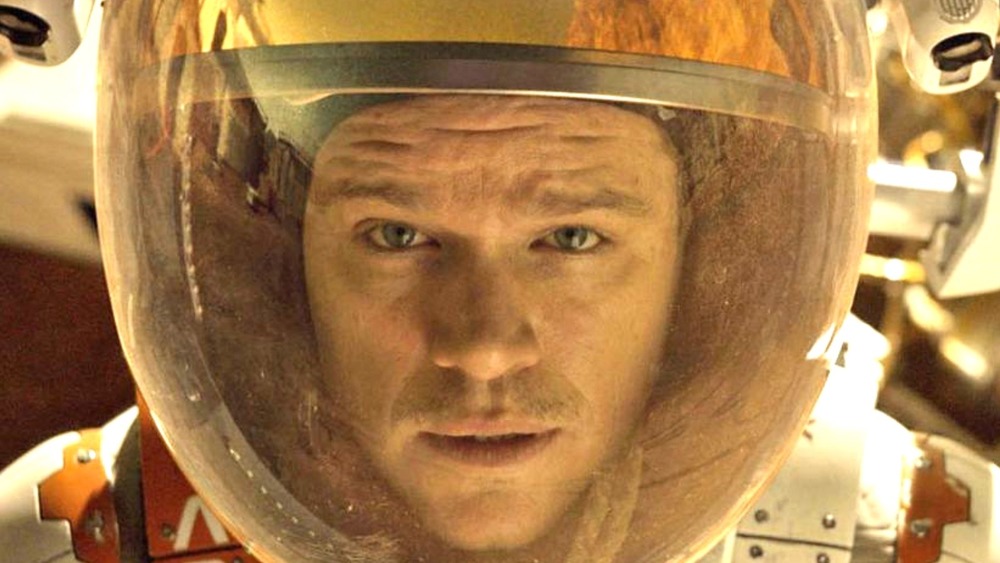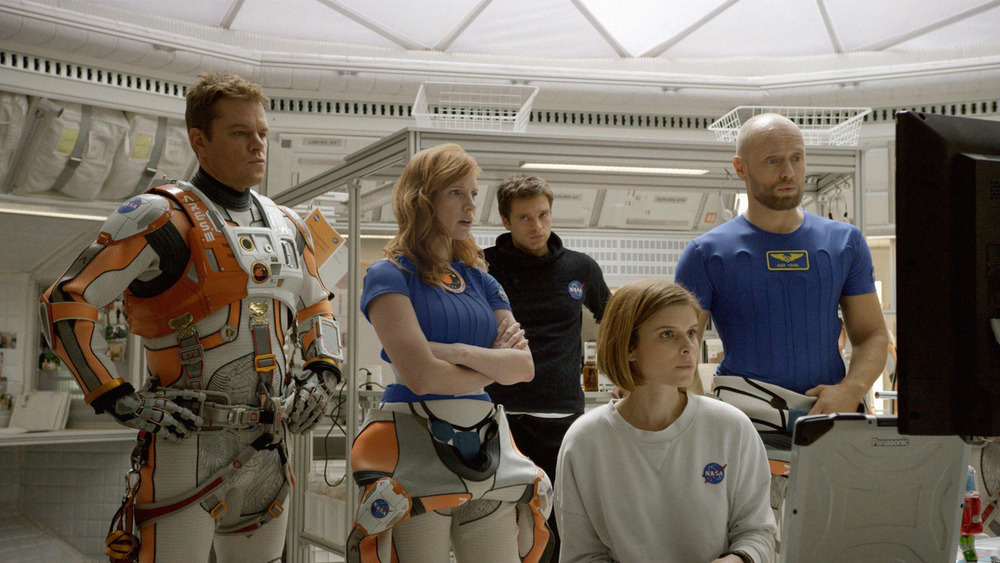The Ending Of The Martian Explained
Ridley Scott's 2015 thriller The Martian is the rare science fiction masterpiece that doesn't need menacing aliens or far-future technology to create an exciting story that also teaches us something about ourselves. "The Martian" of the title is actually Mark Watney (Matt Damon), an American astronaut who gets stranded on Mars and is forced to rely on the efforts of humanity (and his fellow astronauts) to bring him home.
Based on the 2011 novel by Andy Weir, The Martian has been a popular story for the past decade. On the surface, it's a straightforward survival story about a modern-day "what-if" scenario. Watney's plight doesn't seem relatable — few of us will ever find ourselves in a situation like Watney's, and even if we did, most of us don't have the level of intelligence necessary to dig ourselves out of it. By definition, anyone working in a space program is exceptional.
But deeper down, the story (and its tear-jerking ending) teaches a greater, more optimistic message about the human species and what we're capable of — which is an especially good reminder these days. Here's a breakdown of how exactly the film concluded.
The astronauts in The Martian relied on their own creativity to save Watney
Spoiler alert — Watney does survive the events of the movie. But the fact that Watney survives is less important than why he survives: his creativity, as well as the creativity of everyone trying to bring him home.
When Watney is stranded on Mars, it seems hopeless. His only shelter is a decaying installation not meant for long-term use. He has no food supply, no way to communicate with Earth, and no transportation that can break the planet's atmosphere. However, as the film progresses, audiences find that Watney actually does have everything that he needs — stored astronaut waste becomes fertilizer for potatoes and an older Mars rover from a previous mission becomes a way to broadcast messages back home. With a bit of creativity, he begins to utilize all of these resources as a means to help him get back to Earth.
But Watney's not the only person with ingenuity. After he makes contact about his status on Mars, many NASA employees and former crew mates on the Hermes all work together to figure out how to bring him home. And even after the Hermes ship turns around to pick Watney back up — despite not having enough fuel — NASA engineer (Donald Glover) figures out how to use Earth's gravity to slingshot it back to Mars. In the end, Watney and his dedicated crew members all returned back to Earth safely.
The Martian takes place in a world (or rather, worlds) more advanced than our own. Currently, we can only send robots to Mars, and human-piloted missions are at least a decade away. But when Watney is stranded millions of miles away from home, it's not futuristic technology that saves him — it's old fashioned human creativity. We may not be able to go to Mars yet, but as demonstrated by the film, we do have the most important tool of all — our ingenuity. Who knows where that will take us?

